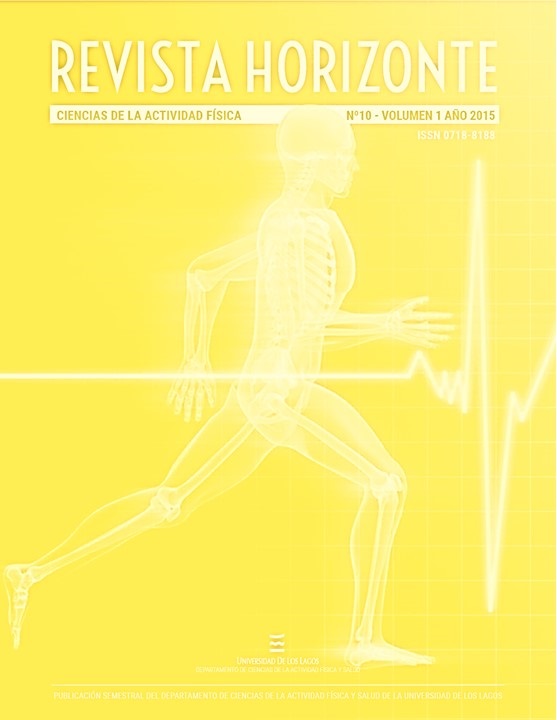Effect of the level of programmed physical activity in students between 14 and 17 years of age.
Main Article Content
Abstract
Currently children and adolescents have a low level of physical activity, which implies an increase in childhood overweight and obesity. To this phenomenon the World Health Organization (OMS) as a protective factor given diseases recommended 60 minutes of daily physical activity. Our objective was to compare the level of physical activity scheduled between 2 groups, in variables nutritional status, muscular strength and maximal oxygen uptake (VO2Máx). This was a quantitative and descriptive research. Twenty two males between 14-17 y separated into two groups, 11 active group (GA) and 11 inactive group (GI). Instruments: Questionnaire Institute of Nutrition and Food Technology, Corporal Mass Index (BMI), Standing Broad Jump Test and Test Course Navette. For statistical analysis was applied inferential descriptive, test of normality and after Anova factor. Significance value p < 0,05. Software SPSS 20.0. The BMI average GA (23,32 kg/m2) and GI (24,58 kg/m) were not significantly different (p=0,5), the SPJ average GA was 200 cm while GI 184 cm, this different is not significant (p=0,2), the VO2Máx average obtained for GA was 48,23 ml/kg/min while GI 30,97 ml/kg/min, this result establishes a high significant difference (p< 0,001) among groups. In conclusion, GA in all parameters has better results than GI, however only the VO2máx presents significant difference.
Article Details
Downloads

This work is licensed under a Creative Commons Attribution-NonCommercial-ShareAlike 4.0 International License.
